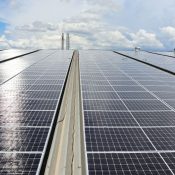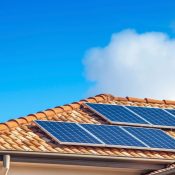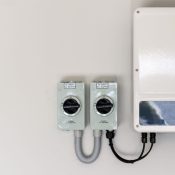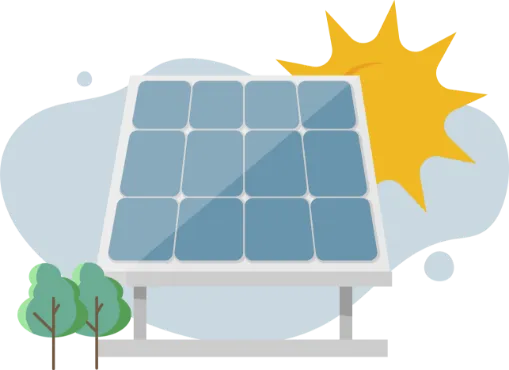Maximise Your Savings With Feed-In Tariff in Ireland for Solar Panels

Are you tired of sky-high energy bills and looking for ways to save money and reduce your carbon footprint? The Feed-in Tariff (FIT) program in Ireland might just be what you need.
This government-supported initiative allows homeowners and businesses to earn payments of up to €0.135/kWh for energy fed into the grid through renewable energy systems, such as solar panels. Participating in the FIT program can reduce your energy bills, lower your carbon footprint, and contribute to a more sustainable future.
What is the Feed-in Tariff (FIT) program?
The FIT program is a government-supported initiative that incentivises the adoption of renewable energy sources in Ireland. By offering payments for energy fed into the grid, the program aims to encourage homeowners and businesses to invest in renewable energy systems, such as solar panels, and play a part in reducing carbon emissions and creating a more sustainable future.
Under the FIT program, participants receive a premium rate for the energy they generate and feed back into the grid. This helps reduce energy bills and lower carbon footprints and contributes to Ireland’s more sustainable energy mix.
Maximising Your Savings with Ireland’s Feed-in Tariff (FIT) Program
The Feed-in Tariff (FIT) program in Ireland offers a great opportunity for individuals and businesses to generate clean energy and receive financial incentives. But how much exactly can you save through this program? Let’s take a closer look at the domestic and commercial savings available.
Domestic Savings: A Path to Financial Gain
For homeowners, the FIT program presents an opportunity to reduce their energy bills while also doing their part in protecting the environment. A typical 3-bedroom house in Ireland can expect to save €50,290 over the lifetime of its renewable energy system, with a payback period of just four years and four months. The cost paid to the homeowner for their electricity exported back to the grid is €5,880, based on the current FIT rate. However, it’s worth noting that this rate is subject to change.
Commercial Savings: Powering Up Your Business
The FIT program also extends to non-domestic installations, such as those on farms and community centres. For example, a farm with a 10kWp solar array installed can receive payment for up to 8kW of electricity exported back to the grid. Non-domestic installations between 6kWp and 50kWp will receive the Premium tariff, with a current rate of €0.135/kWh. This rate is capped at 80% of generation capacity, promoting self-consumption and reducing dependence on the grid.
How to Sell Your Energy? A Step-by-Step Guide
Install a Renewable Energy System
The first step to selling your energy through the feed-in tariff program in Ireland is to install a renewable energy system, such as solar panels, on your property.
Apply for Participation in the FIT Program
Once your system is installed, you will need to apply for participation in the FIT program through the Commission for Regulation of Utilities (CRU).
Provide System Information
The application process typically requires you to provide information about your system, including its capacity and expected output, as well as proof that it meets certain technical and safety standards.
Approval of Application
Once your application is approved, you will be eligible to receive a premium rate for the electricity generated by your renewable energy system and fed back into the grid.
Start Selling Your Energy
With your application approved, you can start selling your excess energy back to the grid and receive payments from the FIT program.
Ongoing Monitoring
To ensure you continue to receive the FIT rate, it’s important to monitor your renewable energy system regularly and ensure that it continues to meet all the necessary technical and safety standards.
How to Maximise Your Feed-in Tariff (FIT) Rate? Tips and Best Practices
Install a High-Quality Renewable Energy System
Choose a reputable and certified installer to ensure your renewable energy system, such as solar panels, meets all technical and safety standards. The better the quality and performance of your system, the more electricity you will generate and the more you will be paid under the FIT program.
Choose an Optimal System Size
Consider the size of your renewable energy system based on your energy needs and the available space on your property. Larger systems will generate more electricity but may also have a higher upfront cost. Work with your installer to determine the optimal system size for your needs.
Use Energy Efficient Appliances and Practices
Reducing energy consumption through energy-efficient appliances and practices will result in less energy imported from the grid. This will increase the amount of energy you generate and sell through the FIT program, maximising your earning potential.
Monitor Your System’s Performance
Regularly monitoring your system’s performance will help you identify any issues or areas for improvement. It can also help you understand how your energy consumption patterns may impact your FIT payments.
Take Advantage of Self-Consumption Incentives
The FIT rate is capped at 80% of generation capacity to encourage self-consumption of the energy generated by your renewable energy system. By using as much of the energy you generate as possible, you can maximise your FIT payments and reduce your reliance on the grid.
Advantages of Joining Feed-in Tariff (FIT) Program
Easy and Accessible
The FIT program makes it easy and accessible for individuals and businesses to participate in renewable energy generation, even for those with limited knowledge or experience.
Guaranteed Income Stream
By participating in the FIT program, you can receive a guaranteed income stream for the electricity generated by your renewable energy system and feed back into the grid. This provides financial stability and peace of mind.
Encourages Renewable Energy Adoption
The FIT program provides a financial incentive for individuals and businesses to adopt renewable energy systems, helping to drive the transition to a cleaner and more sustainable energy future.
Supports Local Economy
The FIT program helps to support the growth of the local renewable energy industry, providing jobs and economic opportunities for communities across Ireland.
Positive Environmental Impact
The FIT program encourages the generation of clean energy, reducing greenhouse gas emissions and helping to mitigate the impacts of climate change. This can positively impact the environment, the economy, and public health.
Invest in a Sustainable Future with the Feed-in Tariff Program Ireland
The Feed-in Tariff (FIT) program in Ireland provides a great opportunity for households and businesses to save money on energy costs and reduce their carbon footprint. With the help of Going Solar, you can take advantage of the FIT program by installing a high-quality solar panel system, receiving a guaranteed income for the excess energy you generate, and boosting the local economy.
Contact us today to learn more about the FIT program and how Going Solar can help you switch to renewable energy.
Planning a switch to solar energy?
Contact Going Solar now and Get Free Advice & Quote Within Minutes!
Frequently Asked Questions
Contact Going Solar Now!
Joe Brennan
Founder @ Going Solar
Joe Brennan, the founder of Going Solar, is dedicated to making solar power mainstream in Ireland and meet SEAI objectives. With a focus on affordability and sustainability, he is bringing renewable energy solutions to homes, reducing costs & environmental impact.
Recent Posts







